Pass Your Amazon AWS Certified Security - Specialty Exam Easy!
Amazon AWS Certified Security - Specialty Exam Questions & Answers, Accurate & Verified By IT Experts
Instant Download, Free Fast Updates, 99.6% Pass Rate
Amazon AWS Certified Security - Specialty Practice Test Questions in VCE Format
Amazon AWS Certified Security - Specialty Practice Test Questions, Exam Dumps
Amazon AWS Certified Security - Specialty (AWS Certified Security - Specialty (SCS-C01)) exam dumps vce, practice test questions, study guide & video training course to study and pass quickly and easily. Amazon AWS Certified Security - Specialty AWS Certified Security - Specialty (SCS-C01) exam dumps & practice test questions and answers. You need avanset vce exam simulator in order to study the Amazon AWS Certified Security - Specialty certification exam dumps & Amazon AWS Certified Security - Specialty practice test questions in vce format.
Mastering the Amazon AWS Certified Security - Specialty Exam Blueprint
Embarking on the journey to achieve the AWS Certified Security - Specialty certification is a significant step for any technology professional focused on cloud security. This certification is not an entry-level credential; it is specifically designed for individuals who have hands-on experience securing AWS workloads. It validates a deep understanding of AWS security services and the ability to design and implement robust security solutions. In an era where data breaches and cyber threats are increasingly sophisticated, holding this certification demonstrates a high level of expertise in protecting data, infrastructure, and applications within the world’s leading cloud platform.
Achieving this certification validates your ability to effectively demonstrate knowledge across a wide range of security topics. This includes understanding specialized data classifications and AWS data protection mechanisms. It signifies proficiency in data encryption methods and the secure implementation of internet protocols. The exam is built for professionals with at least two years of production deployment experience using AWS security services. It tests your capacity to make well-informed decisions regarding cost, security, and deployment complexity, all while navigating the intricate landscape of cloud security risks and operations. This credential is a testament to your advanced skills.
Deconstructing the Exam Domains
To conquer the AWS Certified Security - Specialty exam, you must first understand its structure. The exam is organized into six distinct domains, each covering a critical area of cloud security. These domains are not weighted equally, so it is crucial to know where to focus your study efforts. The domains are Threat Detection and Incident Response, Security Logging and Monitoring, Infrastructure Security, Identity and Access Management, Data Protection, and finally, Management and Security Governance. Each domain tests a unique set of skills and knowledge about specific AWS services and security principles that are vital for a security professional.
A successful preparation strategy involves breaking down each domain to its core components. For instance, Infrastructure Security will require a deep knowledge of services like Virtual Private Cloud (VPC), while Identity and Access Management focuses almost entirely on IAM policies, roles, and federation. Data Protection delves into encryption services like Key Management Service (KMS), and the logging domain will test your understanding of CloudTrail and CloudWatch. By dissecting the exam blueprint, you can create a targeted study plan that addresses each objective methodically, ensuring you leave no stone unturned in your preparation.
Domain 1: Threat Detection and Incident Response
The first domain, Threat Detection and Incident Response, accounts for a notable portion of the exam. This area focuses on your ability to design and implement architectures that are both resilient to threats and have a clear plan for when a security event occurs. You will need to demonstrate how you would configure AWS services to detect potential security threats and unauthorized access proactively. This involves understanding how to correlate log data from various sources to identify suspicious patterns of activity that might indicate a compromise in your environment.
A key aspect of this domain is automated response. The exam will present scenarios where you must determine the most effective automated workflow to contain a security threat. This could involve using services like AWS Lambda to automatically remediate a non-compliant resource or isolate a compromised EC2 instance. You will need to be familiar with services like Amazon GuardDuty for intelligent threat detection, Amazon Inspector for vulnerability assessments, and AWS Security Hub for aggregating security alerts. A deep understanding of how these services integrate is essential for success in this domain and for real-world application.
Domain 2: Security Logging and Monitoring
Security Logging and Monitoring is a foundational domain that underpins many other security activities. It covers the collection, analysis, and storage of log data from your AWS environment. A core competency tested is your ability to design a centralized logging solution. You should know how to configure AWS CloudTrail to capture API activity across all regions and accounts, and how to aggregate these logs into a single, secure S3 bucket for analysis and long-term retention. Understanding how to protect the integrity of these logs is also a critical skill.
Beyond just collecting logs, this domain tests your ability to actively monitor your environment for security-relevant events. This involves using Amazon CloudWatch to create metric filters and alarms based on log data. For example, you should be able to configure an alarm that triggers a notification if a certain number of failed console login attempts occur within a specific time frame. Furthermore, a thorough knowledge of VPC Flow Logs is necessary to understand how to monitor network traffic patterns for anomalies that could indicate a security issue.
Domain 3: Infrastructure Security
The Infrastructure Security domain is one of the largest and most critical on the exam. It evaluates your ability to design and implement secure network architectures and to secure your compute resources. At its core is the Amazon Virtual Private Cloud (VPC). You must have an expert-level understanding of VPC components, including subnets, route tables, internet gateways, NAT gateways, and security groups versus network access control lists (NACLs). The exam will present complex scenarios requiring you to troubleshoot connectivity issues or design a multi-tiered network architecture that is highly secure.
This domain also extends to securing various AWS compute services. You need to know the security best practices for Amazon EC2, such as using hardened Amazon Machine Images (AMIs), managing secrets for applications running on instances, and securely configuring the EC2 instance metadata service. The scope includes container security with services like ECS and EKS, as well as serverless security with AWS Lambda. You will need to demonstrate how to apply the principle of least privilege to the execution roles and permissions assigned to these compute resources to minimize their potential attack surface.
Domain 4: Identity and Access Management
Identity and Access Management, or IAM, is arguably the most important security service in AWS and forms the backbone of this domain. A deep and nuanced understanding of IAM is non-negotiable for passing the AWS Certified Security - Specialty exam. You will be tested on your ability to create and manage users, groups, roles, and policies. You must be intimately familiar with the structure of an IAM policy, including all its elements like Effect, Principal, Action, Resource, and Condition. Scenario-based questions will require you to author a policy that meets specific and complex security requirements.
Beyond the fundamentals, this domain covers advanced IAM concepts. You should understand how and when to use IAM roles for cross-account access or for granting permissions to AWS services. Identity federation is another key topic, requiring knowledge of how to integrate with corporate directories using SAML 2.0 or with web identity providers. Best practices such as enforcing multi-factor authentication (MFA), implementing strong password policies, and regularly rotating access keys are frequently tested concepts. A mastery of IAM is essential for controlling access and enforcing security boundaries across your entire AWS environment.
Domain 5: Data Protection
The Data Protection domain is centered on one of the most critical responsibilities of a security professional: safeguarding data. This domain validates your knowledge of data encryption both in transit and at rest. For encryption in transit, you should understand how to use services like AWS Certificate Manager (ACM) to provision and manage TLS/SSL certificates, and how to enforce encrypted connections to services like Elastic Load Balancers and Amazon CloudFront. The goal is to ensure that data is never transmitted in cleartext over any network.
For encryption at rest, the focus shifts to services like AWS Key Management Service (KMS). You need a deep understanding of the KMS architecture, including concepts like envelope encryption, customer master keys (CMKs), and data keys. The exam will test your ability to design key management strategies, author key policies to control access, and implement automated key rotation. You will also be expected to know the native encryption options for storage services like S3, EBS, and RDS, and to understand the differences between server-side encryption with AWS-managed keys versus customer-managed keys.
Domain 6: Management and Security Governance
The final domain, Management and Security Governance, deals with operating securely at scale. A key service in this area is AWS Organizations, which allows you to centrally manage policies across multiple AWS accounts. You must understand how to use Service Control Policies (SCPs) to enforce security guardrails and restrict the actions that can be performed in member accounts. This is crucial for maintaining a consistent security posture across a large enterprise environment and ensuring compliance with organizational policies.
This domain also covers services that provide auditing and compliance capabilities. AWS Config is a central component, and you will need to know how to use it to continuously monitor and record your AWS resource configurations. You should be able to create Config Rules to automatically check for compliance with desired configurations. Additionally, services like AWS Security Hub, which provides a comprehensive view of your security state, and AWS Audit Manager, which helps you prepare for audits, are important topics. This domain ensures you can not only implement security controls but also govern, audit, and manage them effectively over time.
Foundations of a Secure AWS Infrastructure
Welcome to the second part of our guide for the AWS Certified Security - Specialty exam. In this section, we will take a deep dive into two of the most heavily weighted and foundational domains: Infrastructure Security and Identity and Access Management. Mastering these areas is not just essential for the exam but is fundamental to building any secure environment on AWS. We will move beyond theoretical concepts and explore the practical application of services and best practices that you will be tested on, providing you with the granular knowledge needed to answer complex scenario-based questions with confidence.
Infrastructure security forms the protective outer layers of your cloud environment, defining the network boundaries and securing the compute resources that run your applications. Identity and Access Management, on the other hand, is the critical inner control plane, governing who can do what within that infrastructure. An expert understanding of how these two domains intersect is crucial. For instance, a perfectly configured network is of little use if user permissions are overly permissive, and the strongest identity controls can be undermined by a poorly secured compute instance. Let's begin by dissecting the core of infrastructure security.
Mastering Virtual Private Cloud (VPC) Security
The Amazon Virtual Private Cloud, or VPC, is the cornerstone of network security in AWS. For the AWS Certified Security - Specialty exam, you must have an expert-level grasp of its components and how they work together to isolate your resources. This begins with understanding the fundamental difference between Security Groups and Network Access Control Lists (NACLs). Security Groups act as a stateful firewall at the instance level. This means if you allow inbound traffic on a certain port, the corresponding outbound return traffic is automatically permitted, regardless of outbound rules.
NACLs, in contrast, are stateless firewalls that operate at the subnet level. Being stateless means you must explicitly define rules for both inbound and outbound traffic. A common exam scenario might involve troubleshooting a connectivity issue where an inbound rule exists in the NACL, but the corresponding outbound rule for the return traffic is missing, causing the connection to fail. You must be able to analyze a given network architecture and determine the correct configuration for both Security Groups and NACLs to achieve a desired security posture, always applying the principle of least privilege.
Designing Secure Network Architectures
Beyond individual components, the exam will test your ability to design secure and scalable network topologies. This includes creating multi-tiered architectures using public and private subnets. Public subnets are for resources that need direct access to the internet, like web servers or NAT gateways, while private subnets are for backend resources like databases and application servers that should be shielded from direct internet access. You will need to understand how route tables control the flow of traffic between these subnets and to various gateways, such as an Internet Gateway or a Virtual Private Gateway.
A critical topic within network design is private connectivity. You must understand the function and security implications of VPC endpoints. Interface endpoints and gateway endpoints provide a way for resources within your VPC to communicate with other AWS services without traversing the public internet. This significantly enhances security by reducing the exposure of your internal traffic. Be prepared for questions that ask you to select the most secure and cost-effective method for connecting a private EC2 instance to a service like S3 or DynamoDB.
Hardening Compute Environments
Securing the network is only one part of infrastructure security; you must also secure the compute resources within it. For Amazon EC2, this starts with using a hardened Amazon Machine Image (AMI). You should understand processes for creating your own golden AMIs, which are pre-configured with your organization's security settings, patches, and monitoring agents. This ensures that every instance launched from this AMI has a consistent and secure baseline. The exam will expect you to know how to automate this process to keep AMIs up to date with the latest security patches.
Furthermore, you must be proficient in managing secrets and credentials for your EC2 instances. The practice of hardcoding credentials into an application is a major security risk. You should know how to use IAM roles for EC2, which provide temporary security credentials to the instance automatically. For secrets like database passwords or API keys, you need to be familiar with AWS Secrets Manager and AWS Systems Manager Parameter Store. Understanding the differences between these services, particularly Secrets Manager's ability to automatically rotate secrets, is key for scenario-based questions.
The Central Role of Identity and Access Management (IAM)
Now we transition to what is arguably the most critical security service in AWS: Identity and Access Management, or IAM. This service is the foundation upon which all secure access control is built. A deep, practical knowledge of IAM is non-negotiable for the AWS Certified Security - Specialty exam. You will be tested on every facet of the service, from crafting precise access policies to configuring complex federation scenarios. IAM determines who can access your resources, what actions they can perform, and under what conditions, making it central to enforcing least privilege.
The exam will not ask simple definition-based questions about IAM. Instead, you will be presented with complex scenarios and asked to design an access control solution. This might involve creating a policy to grant granular permissions to a specific S3 bucket prefix or designing a cross-account access strategy that allows one account to manage resources in another. Your ability to read, understand, and troubleshoot IAM policies written in JSON format is a skill that will be thoroughly tested throughout the examination.
Crafting and Troubleshooting IAM Policies
The heart of IAM is the policy document. You must be intimately familiar with the JSON structure of an IAM policy, including all its key elements: Version, Statement, Sid, Effect (Allow/Deny), Principal, Action, Resource, and Condition. The Condition element is particularly important for advanced security scenarios, as it allows you to specify circumstances under which a policy is in effect. For example, you can use conditions to restrict access based on the source IP address, the time of day, or whether multi-factor authentication (MFA) was used.
Understanding IAM policy evaluation logic is also critical. An explicit deny in any applicable policy always overrides an allow. If there is no explicit deny but there is an allow, the action is permitted. If there is neither an allow nor a deny, the action is denied by default. The AWS Certified Security - Specialty exam will often present scenarios with multiple policies attached to a user or role (identity-based, resource-based, SCPs) and ask you to determine the net effect of those policies on a specific API call.
Advanced IAM Roles and Federation
IAM Roles are a crucial concept you must master. A role is an IAM identity that you can create in your account that has specific permissions. Unlike a user, a role does not have standard long-term credentials like a password or access keys associated with it. Instead, when a principal assumes a role, it provides them with temporary security credentials. You need to understand the various use cases for roles, such as delegating access to users or services, enabling cross-account access, and providing permissions to AWS services like EC2.
Identity federation is another advanced topic. Many organizations want their employees to access AWS using their existing corporate credentials. You must understand how to set up federation using SAML 2.0 with an identity provider like Active Directory Federation Services. This involves configuring a SAML provider in IAM and creating a role that federated users can assume. Questions on the exam might require you to design a federation solution that maps corporate user attributes to AWS permissions, ensuring seamless and secure access.
Implementing IAM Best Practices
Finally, the exam will heavily emphasize IAM best practices. You should be prepared to identify and correct security vulnerabilities in a given IAM configuration. This includes always enforcing multi-factor authentication (MFA) for privileged users, especially the root user. You should also know the importance of regularly rotating access keys and implementing strong password policies for IAM users. The principle of least privilege should guide all your decisions; always grant only the minimum permissions required to perform a task.
To help manage permissions at scale, you should be familiar with tools like IAM Access Analyzer. This service helps you identify resources in your organization and accounts, such as S3 buckets or IAM roles, that are shared with an external entity. It does this by using logic-based reasoning to analyze resource-based policies in your AWS environment. Using Access Analyzer helps you discover and remediate any instances of unintended access, making it a powerful tool for maintaining a strong security posture and a key service to know for the exam.
The Core Mission of Cloud Security
Welcome to the third installment of our comprehensive guide for the AWS Certified Security - Specialty exam. Having established a secure infrastructure and robust identity controls, we now turn our attention to the ultimate objective of any security program: the protection of data itself. This part focuses entirely on the Data Protection domain, a critical area that tests your expertise in safeguarding information both as it moves across networks and while it is stored. We will explore the mechanisms for classifying data, the nuances of encryption in transit, and take a very deep dive into encryption at rest using AWS's powerful cryptographic services.
Mastery of this domain is absolutely essential, as data is the asset that adversaries most often target. The exam will present you with intricate scenarios that require you to design a multi-layered data protection strategy. You will need to select the appropriate encryption methods, configure key management services correctly, and enforce data protection policies across a variety of AWS services. A superficial understanding will not suffice; you need a granular, practical knowledge of how these services work and integrate to build a truly secure data architecture.
The Principle of Data Classification
Before implementing any technical controls, a sound data protection strategy begins with data classification. This is the process of categorizing data based on its sensitivity, criticality, and any compliance requirements it may be subject to. For example, you might classify data as public, internal, confidential, or highly restricted. While AWS provides the tools to protect data, it is your responsibility under the Shared Responsibility Model to know what data you are storing and what level of protection it requires. The exam may present scenarios where the type of data dictates the necessary security controls.
Once data is classified, you can apply the appropriate security measures. Public data might not require stringent encryption, whereas highly restricted data, such as personally identifiable information (PII) or financial records, demands the strongest possible encryption and access controls. An effective classification strategy informs your entire security architecture, from IAM policies and network controls to your encryption key management plan. It is the foundational business context that drives your technical security decisions, a concept you must understand for the AWS Certified Security - Specialty exam.
Securing Data in Transit
Data is often most vulnerable when it is moving between systems, whether from a user to your application or between different microservices within your architecture. Securing data in transit involves encrypting it before it is sent and decrypting it only upon receipt. The standard for this is Transport Layer Security (TLS), the successor to SSL. For the exam, you need to know how to enforce TLS encryption across various AWS services to prevent eavesdropping and man-in-the-middle attacks. This ensures that any data intercepted on the wire is unintelligible.
AWS greatly simplifies this process with AWS Certificate Manager (ACM). ACM handles the complexity of provisioning, managing, and deploying public and private TLS certificates. You must understand how to request a certificate with ACM and integrate it with services like Elastic Load Balancing (ELB), Amazon CloudFront, and API Gateway. Exam questions will test your ability to configure these services to terminate TLS traffic, offloading the cryptographic processing from your backend instances and ensuring all client communication is encrypted. You should know how to redirect all HTTP traffic to HTTPS to enforce encryption for all users.
An Introduction to Encryption at Rest
Once data arrives at its destination and is stored on disk, it must be protected through encryption at rest. This ensures that if an unauthorized party gains physical or logical access to the storage media, they cannot read the underlying data. AWS provides multiple options for encrypting data at rest, and these are deeply integrated into most of its storage and database services. A central theme you will be tested on is your ability to select and configure the right encryption strategy based on the service and the data's classification level.
The implementation of encryption at rest typically involves a key management service to handle the creation, storage, and control of cryptographic keys. Simply encrypting data is not enough; the keys used to encrypt that data must also be rigorously protected and managed. This is where AWS Key Management Service (KMS) plays a pivotal role. A significant portion of the data protection questions on the AWS Certified Security - Specialty exam will revolve around your understanding and application of KMS.
Demystifying AWS Key Management Service (KMS)
AWS KMS is a managed service that makes it easy for you to create and control the encryption keys used to encrypt your data. It is essential to understand the KMS key hierarchy. At the top is the Customer Master Key (CMK), which is a logical representation of a master key. This CMK never leaves the secure hardware security modules (HSMs) within KMS. Instead, the CMK is used to generate, encrypt, and decrypt data keys. These data keys are what are actually used to encrypt your data outside of KMS. This process is known as envelope encryption.
Envelope encryption is a powerful concept you must master. When you want to encrypt data, you request a data key from KMS. KMS returns a plaintext version of the data key (for you to encrypt your data with) and a ciphertext version of that same data key (encrypted by your CMK). You use the plaintext key to encrypt your data, and then you discard it. You store the encrypted data alongside the encrypted data key. When you need to decrypt, you send the encrypted data key back to KMS, which uses your CMK to decrypt it and return the plaintext data key.
Managing Keys and Policies in KMS
For the exam, you must understand the different types of CMKs. AWS managed CMKs are created and managed on your behalf by AWS. Customer managed CMKs are created by you, giving you full control over their lifecycle, including their key policy and rotation schedule. You can also import your own key material into a customer managed CMK. A key policy is the primary access control mechanism for a CMK. It is a resource-based policy that defines who can use and manage the key, which is a frequent topic in exam questions.
In addition to key policies, you can use IAM policies and grants to control access to CMKs. You need to understand the interplay between these different policy types. For example, to use a CMK, a principal must have permission in both its IAM policy and the CMK's key policy. Grants are a mechanism for delegating permissions to other AWS principals for a specific CMK, often used by AWS services to get permission to use a key on your behalf. Understanding how to author a secure and functional key policy is a critical skill.
Implementing Encryption Across AWS Services
Your knowledge of KMS will be tested in the context of other AWS services. For Amazon S3, you need to know the three server-side encryption (SSE) options. SSE-S3 uses keys managed by S3, SSE-KMS uses KMS for key management, and SSE-C allows you to provide your own encryption key with each request. You should be able to create an S3 bucket policy that denies any object uploads that do not include a specific encryption header, thereby enforcing encryption for all data stored in that bucket.
For Amazon EBS, the storage volumes used by EC2 instances, you can enable encryption by default for your account. This ensures that all new EBS volumes are automatically encrypted, simplifying compliance. For Amazon RDS, you can create an encrypted database instance by simply checking a box at launch. This encrypts the underlying storage, backups, and read replicas. The exam will expect you to know which KMS CMK to use in these scenarios and how to ensure the relevant services have permission to use that key to perform cryptographic operations.
Mastering Sophisticated Secrets Management in Cloud Environments
Within the broader domain of data confidentiality and integrity, one of the most nuanced and often overlooked aspects is the secure handling of sensitive credentials. This encompasses items such as database login information, API authentication tokens, encryption keys, and OAuth secrets. The method in which these digital secrets are stored and retrieved directly affects the security posture of your entire cloud ecosystem. Relying on insecure methods, such as embedding secrets directly into source code or static configuration files, introduces significant risk and is considered a critical security vulnerability in modern architectures.
To mitigate these challenges, cloud-native solutions provide secure mechanisms tailored for secret lifecycle management. In the context of cloud infrastructure, particularly within environments built on AWS, two essential services are available for managing confidential parameters: AWS Systems Manager Parameter Store and AWS Secrets Manager. Each offers distinct capabilities designed to address various use cases, and understanding their differences is vital, especially for those preparing for the AWS Certified Security - Specialty exam.
Secure Storage Techniques for Application Secrets
Before exploring the unique traits of these services, it is important to understand what it means to store secrets securely. Secure secrets management involves storing, accessing, updating, rotating, and auditing sensitive data in a controlled and encrypted environment. The risks associated with poor secrets management are wide-ranging—from unauthorized access and data breaches to compliance violations and reputational damage.
AWS provides integrated services that handle not only encryption and decryption processes using AWS Key Management Service (KMS), but also version control, access logging, and conditional access policies. These practices allow organizations to enforce strong security controls over how secrets are accessed and by whom.
Exploring AWS Systems Manager Parameter Store
AWS Systems Manager Parameter Store is often the first choice for developers seeking a lightweight and cost-effective solution for managing configuration values and secrets. This service supports both plaintext and encrypted storage options, with encryption handled via integration with KMS.
Hierarchical organization allows parameters to be structured in a tree-like format, enabling logical segregation by application, environment, or module. Access to these parameters can be tightly controlled using Identity and Access Management (IAM) policies, which define which users or roles can read, write, or update a specific parameter.
While Parameter Store supports versioning and secure access control, it lacks advanced automation features such as automatic secret rotation. As a result, while it is highly suitable for use cases such as storing configuration flags, environment variables, or less-sensitive secrets, it may not meet more stringent operational or compliance requirements for high-risk secrets.
Unlocking the Power of AWS Secrets Manager
AWS Secrets Manager is a purpose-built service explicitly designed to manage sensitive secrets through their full lifecycle. This includes creation, secure storage, retrieval, rotation, and auditing. One of the most distinguished capabilities of Secrets Manager is the built-in support for automated secret rotation. Users can configure a rotation schedule and integrate it directly with AWS managed services such as Amazon RDS, Amazon DocumentDB, and Amazon Redshift.
This automation eliminates the need for human intervention during key rotation, significantly reducing the risk of secret exposure through stale credentials. Moreover, Secrets Manager integrates seamlessly with Lambda functions, allowing custom logic to be executed during the rotation process—making it highly adaptable to non-AWS or legacy systems as well.
Secrets Manager also supports tagging, fine-grained access policies, and detailed audit logging via AWS CloudTrail. These features are crucial for teams operating in regulated industries or security-sensitive environments, where accountability and traceability are essential.
Comparing Secrets Manager and Parameter Store: Choosing the Right Tool
While both services provide encrypted storage and secure access capabilities, their intended purposes differ significantly. Selecting the appropriate service depends on your specific security requirements, budget considerations, and operational complexity.
Use AWS Systems Manager Parameter Store when:
Your configuration items are not frequently rotated
You require a simple and inexpensive solution
Your secrets can be encrypted using KMS without needing automated rotation
You are storing less-sensitive application settings or feature toggles
Use AWS Secrets Manager when:
You need to automate the rotation of credentials or API keys
Your organization mandates regular secret rotation for compliance
You require integrations with RDS, DocumentDB, or Redshift
You need customizable secret rotation workflows using AWS Lambda
You are managing a large inventory of secrets across multiple services
Understanding these distinctions is essential for efficient architecture design and is a key competency assessed in cloud security certifications.
Avoiding Common Pitfalls in Secrets Handling
Despite the availability of robust tools, many organizations still suffer from preventable vulnerabilities due to improper use of secrets. The most dangerous of these is hardcoding secrets directly in source code repositories. This practice not only exposes sensitive credentials to version control systems but also leaves secrets vulnerable to accidental sharing, such as pushing them to public repositories or shared development environments.
Best practices to avoid such pitfalls include:
Never storing secrets in plaintext or in unencrypted configuration files
Regularly rotating secrets to minimize the impact of a potential compromise
Using IAM policies to enforce least-privilege access to secrets
Monitoring all access to secrets through logging and anomaly detection tools
Educating developers and DevOps personnel about secure coding standards
When applied consistently, these practices form the foundation of a mature and secure secrets management strategy.
Enhancing Operational Security with Automation and Policy Controls
A significant advantage of cloud-native secrets management tools is the ability to automate both usage and governance. Secrets Manager, for instance, allows teams to enforce automatic rotation policies while maintaining full visibility into each change via detailed logs.
Additionally, IAM roles can be scoped precisely to prevent overexposure. For example, an application deployed on an EC2 instance may be granted read-only access to a specific secret, while developers are denied any direct access.
The integration of secrets management with other AWS services—such as Lambda, CloudFormation, and CloudTrail—provides comprehensive coverage from deployment to auditing. This interconnectedness ensures that secrets are not just stored securely, but are also used responsibly and monitored effectively.
Strategic Integration with DevSecOps Pipelines
Modern infrastructure is increasingly built with automation-first principles. In continuous integration and delivery pipelines (CI/CD), secrets must be handled dynamically without introducing risk. Both Parameter Store and Secrets Manager can be integrated into these pipelines to inject secrets at runtime, ensuring they are never stored unencrypted or hardcoded in source repositories.
Common integrations include:
Injecting secrets as environment variables during container deployment
Fetching encrypted values during Terraform or CloudFormation builds
Using Lambda functions to rotate and test credentials post-deployment
Automating alerting for unauthorized access to sensitive parameters
These strategies align secrets management with DevSecOps principles, enhancing both agility and security.
Go to testing centre with ease on our mind when you use Amazon AWS Certified Security - Specialty vce exam dumps, practice test questions and answers. Amazon AWS Certified Security - Specialty AWS Certified Security - Specialty (SCS-C01) certification practice test questions and answers, study guide, exam dumps and video training course in vce format to help you study with ease. Prepare with confidence and study using Amazon AWS Certified Security - Specialty exam dumps & practice test questions and answers vce from ExamCollection.
Amazon AWS Certified Security - Specialty Video Course

Top Amazon Certification Exams
- AWS Certified Solutions Architect - Associate SAA-C03
- AWS Certified Solutions Architect - Professional SAP-C02
- AWS Certified AI Practitioner AIF-C01
- AWS Certified Cloud Practitioner CLF-C02
- AWS Certified Security - Specialty SCS-C02
- AWS Certified DevOps Engineer - Professional DOP-C02
- AWS Certified Machine Learning Engineer - Associate MLA-C01
- AWS Certified Data Engineer - Associate DEA-C01
- AWS Certified Developer - Associate DVA-C02
- AWS Certified Advanced Networking - Specialty ANS-C01
- AWS Certified Machine Learning - Specialty
- AWS Certified SysOps Administrator - Associate
- AWS Certified CloudOps Engineer - Associate SOA-C03
- AWS-SysOps
Site Search:








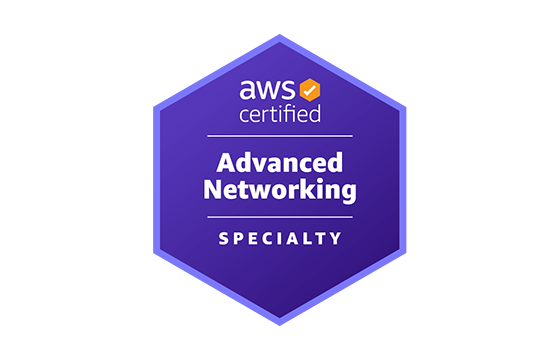



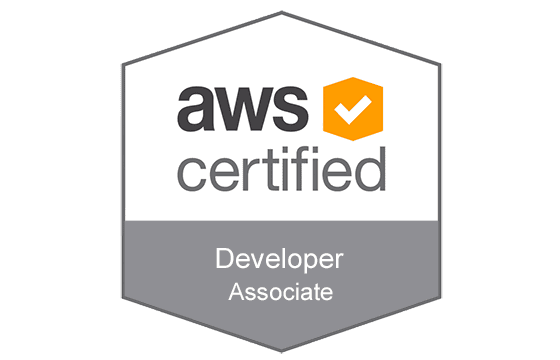
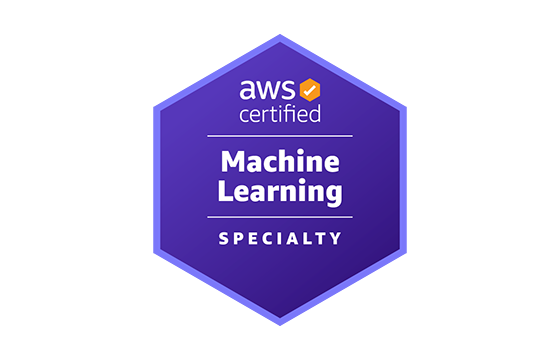

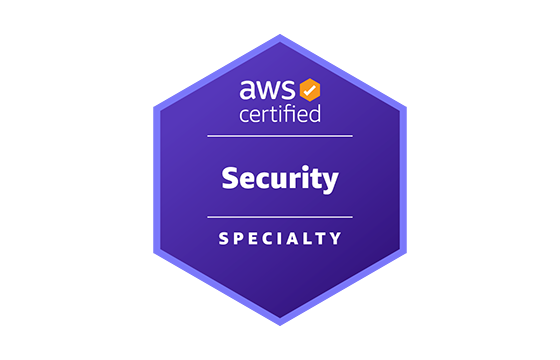
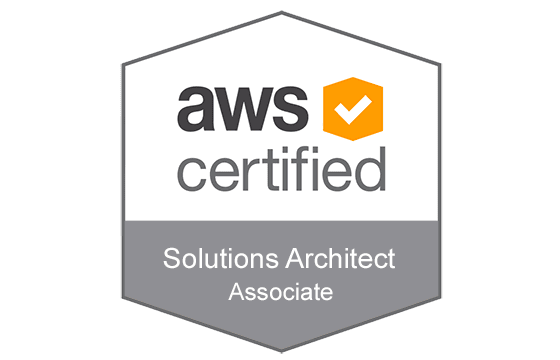
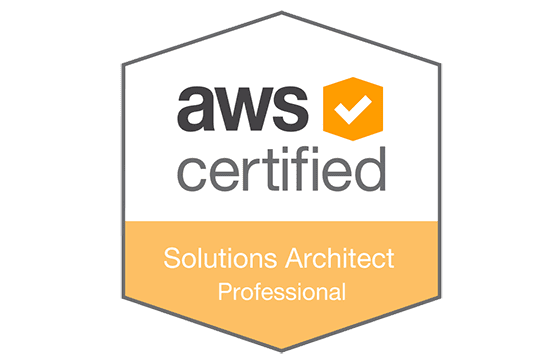
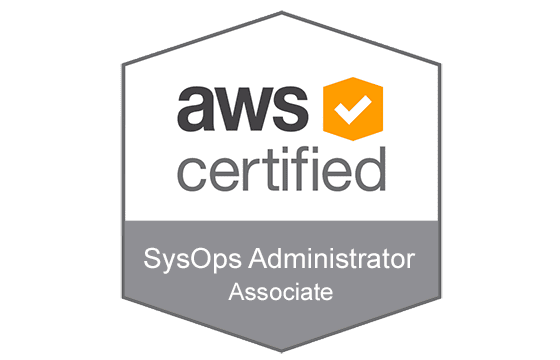
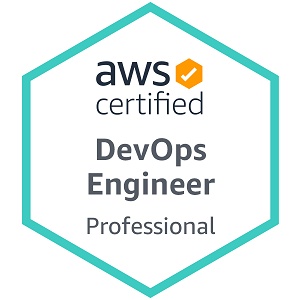



Hello, anyone took this exam recently ? is the Premium still valid ?
Thx
Jim
Hey guys, any one took this exam recently ? are the questions still valid ? Thanks,
Hey guys, anyone used the premium file recently ? Anyone knows of valid training questions ? please let me know. Thanks.
@adonis13, yes, these are the latest questions and answers for AWS Certified Security – Specialty exam. they are actual &valid and will help you get ready as they cover all the topics needed. but you should train hard with them, as well as other prep options for this exam….only in this case can pass. all the best!!
are these the latest AWS Certified Security – Specialty practice questions and answers? I would like to know if they will help me pass this exam????????
@conner_w, these dumps for AWS Certified Security – Specialty exam are reliable. i used them and passed without difficulty. most of the questions in the files were reflected in the actual exam! use these materials and you’ll not regret. wish you luck ☺
who has used these AWS Certified Security – Specialty exam dumps and passed their Amazon exam? I’m also wondering whether they will be useful alone or i need anything else…
@troy, these braindumps for AWS Certified Security – Specialty exam are up to date. they helped me ace my exam this morning! there were no entirely strange questions in the actual test. so thesefiles are what you need to be ready for the exam!!!
are these vce files for AWS Certified Security – Specialty exam valid? don’t want to waste time on outdated material….pleeease, reply asap!
are these Valid?